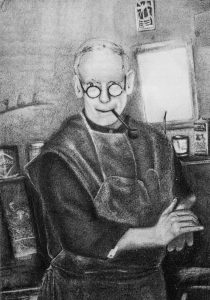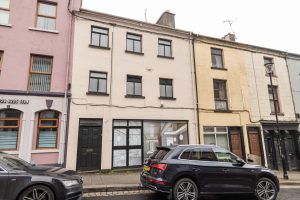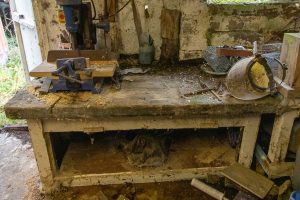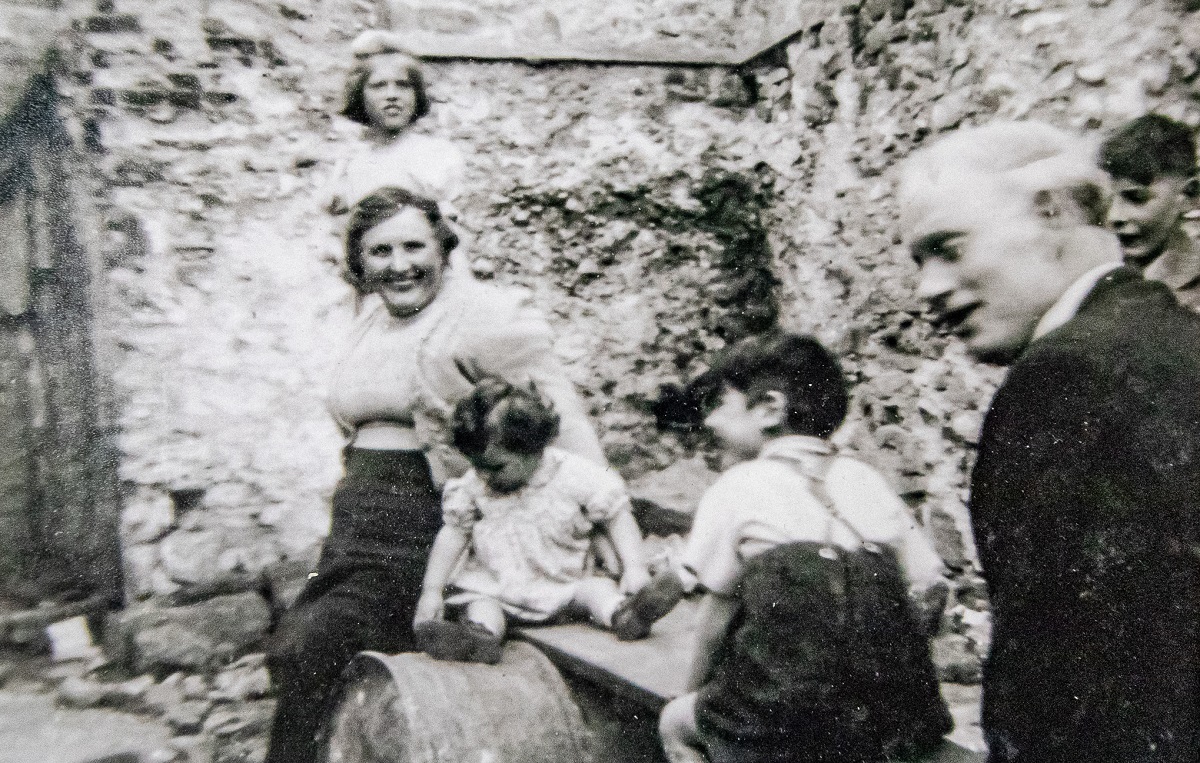The craftsmanship of footwear was once a much-sought talent in Omagh, and in an old building on George’s Street, there was a humble shoemaker whose skills surpassed the ordinary.
This story, unlike many others we have covered, is much closer to home for me, as it was my great grandfather who slaved at the counter, making and repairing footwear for the town.
He was a local man by the name of Johnny McGuigan, who was born in 1888, and reared in a cottage on the Old Mountfield Road, where the car park of the disused health complex stands today.

After leaving school with little education and no experience, Johnny headed for Scotland around 1908, seeking adventure, work, and practical skills to bring home.
During his time there, he worked as a farmhand, picking potatoes in the field, but he soon found his niche when he took an apprenticeship as a shoemaker.
With these newfound skills, he returned to Omagh, where he would meet his wife, Annie.
After renting an apartment for a short time, the pair moved to 13 George’s Street in the 1920s and rented the house from Jack Broderick, proprietor of the nearby Broderick’s Bar.

However, Johnny was fed up with renting, and he bought the property from Mr Broderick.
Those were early days of his business, however, so to help pay off the mortgage, Johnny bought a dozen pigs and kept them in the back garden of the house. His intention was to fatten up the pigs, and resell them at a higher price to butchers and fellow animal keepers.
After success selling his first pigs, Johnny bought another dozen pigs before buying a couple of cows for the same purpose, and later expanding to a coup of chickens.
As the size of this backyard farm animal zoo rose, so too did Johnny’s family, until there were 14 children running around the house.
Although space was at a premium, the house was still sizeable for the centre of town, and had a back garden that extended all the way down to the Strule River.
The building was three storeys tall, with big windows at the shop front, and a side door for the family which led straight into the house.
Inside the shop front was where the craftsman pieced together the footwear, and his workshop comprised of different areas.
Beside the window was the standing counter in which the rough shoe was made. The leather was drafted and cut, and the soles were burned and waxed into place.
A lower table sat opposite this counter, where Johnny had a small stool at another bench, where he carefully stitched the soles onto the body of the shoe.
Behind that counter was where the rough shoe was near-perfected, with a belt sander used to smoothen out the rough cuts on the soles to round them to the desired shape.
After this, Johnny strived for the highest quality for his customers.
He sat down to polish and bull the shoe until it was so shiny that you could see your own face reflecting back off them.
Lo and behold, some scraps of leather and wax came together to form quality, perfected shoes; a laborious process now long lost to time.
‘Tramp tradesmen’
But Johnny didn’t always work alone. Sometimes he was assisted by the occasional ‘tramp tradesmen’, a common name for town-to-town workers at the time.
These workers, often brick layers, carpenters and scaffolders, would arrive in town with a bindle of tools and ask for a few days’ work in exchange for money, before leaving on their next venture again.
Although, to Johnny’s dismay, some would decide to leave in the middle of fixing a shoe – and still ask to be paid!
A favourite joke told by Johnny was, “Why don’t you see a blacksmith tramp tradesman?”
…“Because it’d be pretty hard to carry an anvil everywhere!”
The main house itself consisted of a dining room and kitchen, while upstairs there were six bedrooms.
Interestingly, the house even contained a cellar, mainly used by the family to store potatoes and sand for construction.
Shoemaking had always been a laborious and expensive trade, and by the 1950s, Johnny ceased crafting new shoes due to low demand.

Also, the intensive techniques were taking a toll on his chest muscles.
The last man to have shoes made by the master craftsman was Bishop Dr O’Doherty from the Sacred Heart Church, who was a close family friend of the McGuigans.
Johnny, then, concentrated on the repairing of shoes, much to the wonder of his children, who would sit with him and watch as he routinely tendered, waxed, bulled and stitched up the town’s footwear.
Things took a turn for the worst when, in 1952, Johnny’s wife, Annie, died of cancer, aged just 55.
Following her death, Johnny continued working, but found himself bedbound with the flu.
However, in later years some of his children believed it was depression from grief that worsened his condition.
They urged Johnny to cease his shoe trade as they felt he had worked long and hard enough, and he subsequently gave in to their advice.
Thus, Johnny retired, and the shop became a confectionary store, selling sweets, apples and wholesale.
Following his death in 1963 at the age of 74, the shop and house was reclaimed by Jack Broderick, who sectioned off the rooms and rented them out as apartments.
Today the once-bustling shop front has fallen silent, but if the walls inside could talk, they would recall many happy memories of a tradesman and his family who brought so much life to this historic street.







